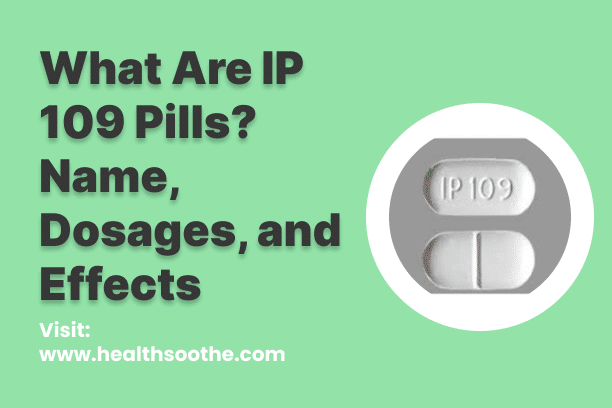IP 109 serves as a prescribed analgesic designed to address intense pain, providing relief for individuals struggling with severe discomfort unresponsive to alternative pain management methods. This medication enables such patients to lead regular lives, yet for some, it presents a potential pathway to substance dependence.
This particular white tablet, imprinted with the "IP 109" emblem, combines two distinct pain-relieving components: acetaminophen and hydrocodone. Acetaminophen, an over-the-counter (OTC) pain reliever found in various medications, including Tylenol, is non-addictive. In contrast, hydrocodone, a synthetic opioid, is capable of managing severe pain but carries a risk of addiction and misuse.
While IP 109 proves beneficial for many individuals grappling with severe pain, akin to Oxycodone and similar medications, it possesses the inherent danger of fostering addiction, even unintentionally. Prolonged usage of IP 109 can readily lead to dependency. Additionally, when employed for recreational purposes, it accelerates the risk of opioid addiction and introduces potential complications of a medical nature.
What is the IP 109 Pill?
The IP 109 tablet shares a common appearance with many prescription medications, being a small, oval-shaped white pill imprinted with "IP 109." Constituting a blend of acetaminophen and hydrocodone, as outlined by the US National Library of Medicine, each IP 109 pill comprises:
- 325 milligrams of acetaminophen
- 5 milligrams of hydrocodone
The combination of acetaminophen and hydrocodone in IP 109 is designed to address moderate to moderately severe pain. This amalgamation aims to mitigate the potential for abuse and reduce potency compared to more potent opioid pain relievers. However, recreational misuse of IP 109 remains a possibility.
It is crucial to recognize that drug abuse is more about behaviors than the specific substance used. Despite IP 109 requiring a prescription, abuse is not uncommon in the realm of prescription drugs. Several behaviors associated with drug abuse include:
- Purposefully consuming an excessive amount of prescription medication like IP 109
- Using IP 109 beyond the recommended usage duration
- Combining IP 109 with other substances, such as alcohol
- Sharing IP 109 with others or taking someone else's prescribed IP 109
- Seeking additional IP 109 prescriptions through practices like "doctor shopping"
It is important to note that the combination of opioid medications like IP 109 with alcohol can lead to potentially fatal consequences.
Pros and Cons of Ip 109
Pros of IP 109
- Effective Pain Management
- Gradual Release
- Improved Functionality
- Prescription-Based
Cons of IP 109
- Risk of Addiction
- Overdose Risk
- Health Risks of Acetaminophen
- Counterfeit Medications
Differences Between Ip 109 and Cymbalta
IP 109
It is a combination medication containing acetaminophen and hydrocodone. This combination is typically used to manage moderate to severe pain.
Cymbalta
The active ingredient is duloxetine, which is classified as a selective serotonin and norepinephrine reuptake inhibitor (SSNRI). Cymbalta is primarily prescribed for the treatment of major depressive disorder, generalized anxiety disorder, fibromyalgia, and chronic musculoskeletal pain.
Alternative to Ip 109
Non-Opioid Pain Relievers
- Non-opioid analgesics, like nonsteroidal anti-inflammatory drugs (NSAIDs) or COX-2 inhibitors, might be considered depending on the type of pain and individual factors. Common NSAIDs include ibuprofen or naproxen.

